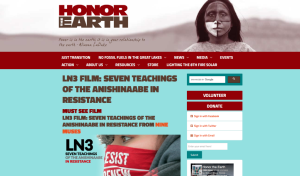General Interest
Back to Top
|
 |
|
2021 World Happiness Report
|
Social studies |
|
The annual World Happiness Report (previously featured in the 03-13-2020 Scout Report) looks at happiness and well-being around the world. Readers can check out how their home country ranks among others, learn the secrets of Earth's happiest countries, and consider how data can be employed to measure happiness. The 2021 report focuses on the impact of the COVID-19 pandemic on happiness, including mental health (chapter 5), social connections (chapter 6), and the workplace (chapter 7), as well as evaluating the effectiveness of each country's pandemic response (chapters 2-4 and 8). The most buzzed-about section of the report, the world rankings, can be found in Table 2.1 and Figure 2.1 in Chapter 2. In the page header, readers can click "Read the Reports" to find the previous eight editions of the report from 2012 to 2020. The report is written by a volunteer, interdisciplinary team of experts and uses data from the Gallup World Poll and other sources. To learn more about the writers of the report, the sources of the data, and how the data were analyzed, readers should check out the Foreword of the report, the Appendices & Data section, and the "FAQ" section on the page linked above. The report is published by the Sustainable Development Solutions Network. Readers can find a list of the project's financial supporters by scrolling to the page footer or clicking "Partners" in the page header. [HCL] |
|





|
|
 |
|
Educational Case Study Activity: Debate Over the GMO Papaya
|
Science |
|
In this learning activity, high school and undergraduate students get to play roles such as activist, papaya farmer, biotech scientist, USDA regulator, or council member as they debate whether the Hawaii County Council should ban genetically-modified rainbow papaya. The goal of the case study is to engage students in discussion of issues about GMO use in agriculture through exploration of the perspectives on Hawaiian cultural preservation, economic development, food security, biotechnology, public health, environmental sustainability, and more. The lesson plan gives each participant background information about their character, their stance on the issues, talking points, and questions to ask and answer, as well as links to background reading specific to their role. The activity can be adapted for any class size (explained on page 3 of the downloadable PDF). Teachers looking to use this lesson can find a brief background of the rainbow papaya and the Hawaiian economy on pages 4-5. On the page linked above, readers will also find a free 30-minute documentary on the Hawaiian GMO debate. The case study was developed by Pulitzer Prize-winning science and technology journalist Amy Harmon, who has written extensively on public perception of GMO crops. The project is supported by the Alliance for Science, based in the Department of Global Development at Cornell University's College of Agriculture and Life Sciences. [HCL] |
|





|
|
 |
|
 |
|
Art in America
|
Arts |
|
The venerable art journal Art in America, first published in 1913, provides "groundbreaking critical insights about contemporary art and culture." Its digital version provides a good bit of content for non-subscribers, albeit fairly well peppered with ads. On the page linked above, readers and art lovers will find content from the journal that includes Features such as "Six Must-See Exhibitions in Chelsea This Summer"; Reviews such as "Outsize Symbols: Sonya Clark at the deCordova Sculpture Park and Museum"; Interviews with working artists such as Kameelah Janan Rasheed and Em Kettner; and a digital counterpart to the A.i.A. Guide, a browseable listing of 3,000 art museums, galleries, and other art venues. Art in America's sister digital publication, ARTnews (which can be accessed by clicking "ARTNEWS" in menu above the banner), provides briefs about artists, current exhibitions, museum acquisitions, and recommendations for products such as oil-based paint markers and drawing boards for kids. Readers can click "Subscribe to the Magazine" for a print subscription or scroll to the bottom of the page to sign up for free email newsletters. Readers can also follow the journal on Facebook, Instagram, or Twitter (@artinamerica on all three platforms). [DS] |
|





|
|
 |
|
LN3 Film: Seven Teachings of the Anishinaabe in Resistance
|
Science |
|
Storytelling is intrinsically linked to social change. In just over 30 minutes, this documentary tells the story of activists, including Indigenous climate interveners, water protectors, and land defenders, who fought to protect their land from fossil fuel expansion. Thomas X, a Red Lake Ojibwe rapper and poet, drives the narration of the film with lessons from "7 Teachings," a song that highlights the importance of respect, truth, honesty, wisdom, humility, love, and courage. The film also includes dialogue with Indigenous activists Winona Laduke and Tara Houska, among many others. While the film focuses on resistance to an oil pipeline, it also touches on broader themes of sustainability and biodiversity. The film has garnered significant praise, including selections to the Colorado Environmental Film Festival, the Garifuna International Indigenous Film Festival, and the Los Angeles International Film Festival's Indie Short Fest. LN3 was directed by Suez Taylor, executive produced by Winona LaDuke and Maggie Wachsberger, and sponsored by Nine Muses, Patagonia, Honor the Earth, Extinction Rebellion, and the 11th Hour Project. [EMB] |
|





|
|

















